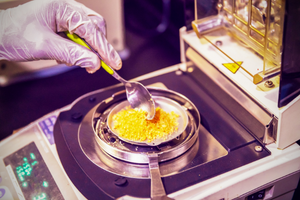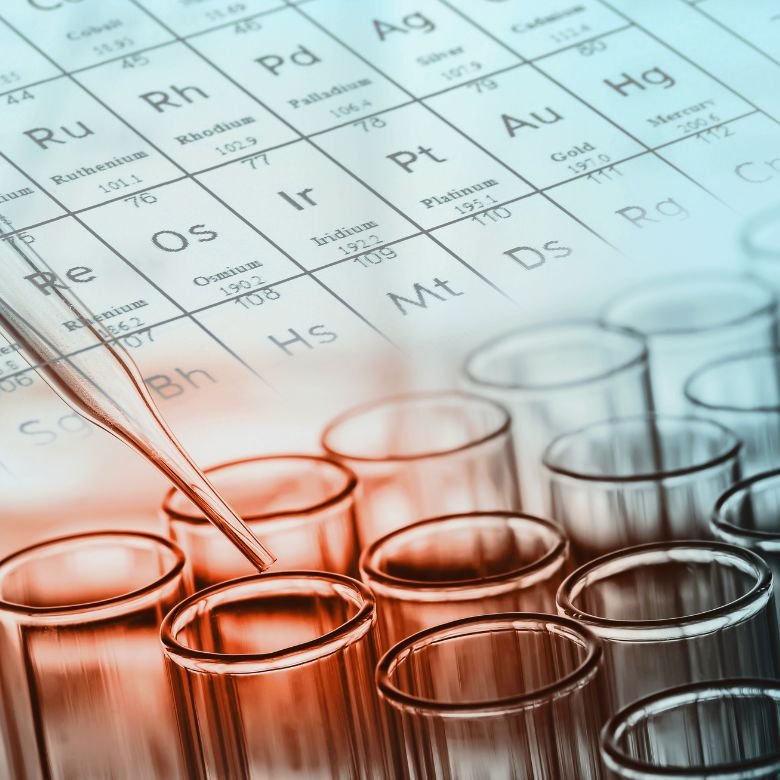Quantitative analysis is a division of analytical chemistry that deals with assaying the contents of the ingredients in the tested compound or mixture. The methods used in such an analysis can be divided into two main groups: classical methods and instrumental methods. Classical methods, which are also referred to as chemical methods, require various reactions, and the assay is carried out with masses or volumes. In contrast, instrumental methods allow us to apply measuring instruments that use the dependence of different physical properties on the concentration of the substance analysed.

Quantitative analysis: classical methods
The commonly applied classical analyses include the gravimetric and the volumetric methods. The former relies on determining the mass of the ingredient of interest. The latter enables assaying the composition based on the measured volume of the solutions of reacting substances with a known and an unknown concentration.
Gravimetric analysis
The ingredient to be weighed can be extracted from the mixture in two ways: chemically, by sediment precipitation or by separation with secreting volatile substances; or physically, by centrifugation or drying. The mass of the assayed substance can be obtained directly or indirectly. If we do not physically acquire the compound of interest but an ingredient that secretes in a stechiometric relation to the tested compound, we can also calculate its mass. In practice, we most often use precipitation methods, which allow us to directly weigh the dried sediment of the assayed compound. However, this method imposes a few preconditions. The applied sediment should show low solubility, a specified chemical composition and an appropriate structure. If the sediment is contaminated, it must be purified, which is in turn easier if the crystals are coarse. Examples of gravimetric assays:
- Assaying the percentage of dry matter content, used for analysing plant and animal materials, food products, and drugs.
- Assaying soil moisture.
- Assaying the content of crystalline water and determining the molecular formula of salt hydrate, for example for FeSO47H2O.
- Assaying iron in the form of Fe2O3
- Assaying mass loss after drying food supplements.
Volumetric analysis
The methods of this type are based on the relationship between the volumes of interacting substances when we know the concentration of one of them. Thus, we can easily calculate the mass or concentration of the assayed substance. It is important that the chemical reactions applied are carried out quickly and quantitatively. This means that there should be no secondary reactions. Volumetric analyses, in practice, come down to titration and their pattern is often very similar. We put a precisely measured quantity of the tested chemical substance into a conical flask, and then we use a biuret to gradually introduce the titrant, that is a titration solution with a known concentration. Another term for titrant is standard volumetric solution, as we know its exact titre (concentration). The most important point of any titration is to catch its endpoint, that is the final point of titration. This is usually possible by adding an appropriate indicator, which changes its colour when the reaction is over. For potentiometric titration, this is represented by a clear, sudden change in potential. In terms of the type of the reaction that occurs during analysis, volumetric assays can be divided into four groups:
- Acid-base titration, which uses the neutralisation reaction and enables the quantitative assay of bases with the use of standard volumetric solutions of acids or vice versa. This method may also be used to assay the content of salts, which hydrolyse and react with bases or acids one by one. The titration endpoint is recognised with the use of an acid-base indicator, for example phenolphthalein, which changes its colour once an appropriate amount of titrant is added.
- Redoxymetry, which involves the reactions of oxidation and reduction, it can be used in two ways. Oxydimetric methods are used to assay reducing substances, while reductometric methods are applied for assaying oxidants. The observation of changes in potential is possible with the use of coloured redox indicators, and also by potentiometry. The sudden change in potential at the endpoint should correspond to the change in the indicator’s colour. Commonly used indicators include ferroin and erio green. There are also specific indicators, such as starch in iodimetry or potassium manganate (VII) in manganometry.
- Precipitation analysis, which consists in precipitating sparingly soluble sediments.
- Complexometry, which uses the reactions forming durable complex compounds that are soluble in water. These are metal ion complexes with complexone III (ethylenediaminetetraacetic acid sodium salt), also called disodium versenate or EDTA. This method is applied, for instance, to assay total water hardness.

Colorimetry
This is one of the instrumental optical methods which relies on the absorption of visible radiation by the solutions of coloured substances. With the use of the UV-Vis spectrophotometer, we can read out absorbance (A) of a particular solution, and if we know both the thickness of the absorbing layer (I) and the molar absorbance coefficient (ɛ), we can calculate the solution concentration (c) based on the formula describing the Lambert-Beer law:
A = ɛ·c·l
Thin layer chromatography (TLC)
It is not only a qualitative method that makes it possible to separate ingredients of a mixture, but also a quantitative method. TLC is the simplest type of chromatographic techniques. The separation of a mixture of compounds is caused by interactions of the substance with the stationary and mobile phases, depending on its affinity. The stationary phase is most often formed by aluminium or glass plates covered by adsorbents such as silica gel or aluminium oxide. The mobile phase can be formed by a solvent or a mixture of solvents, whose composition is suited to the assayed substances. The assay procedure includes applying the tested substance along with reference standards on a plate and extending it in the mobile phase up to a specific height. Sometimes the plate must be observed in appropriate (visible or ultraviolet) light, or called with a suitable spray and then heated. Quantitative analysis consists in comparing the intensity and size of the resulting stains of the analysed substance and of the reference standard. This method is used, for example, to assay natural pigments and pesticides.
Liquid and gas chromatography
These are the most precise techniques of quantitative analysis, which enable us to accurately determine the contents of the tested substance in the sample. Depending on the type, the mobile phase is a liquid or a gas, whereas the solid phase is a solid body or a liquid with adsorptive properties, placed on a solid support. Quantitative analysis is based on assessing the peak height or area. The calculation should be started with determining the baseline, and then we should measure the area of the peak in question. It is proportional to the quantity of the ingredient in the solution. By applying a standard solution, we can precisely calculate the content of a substance in the analysed sample.